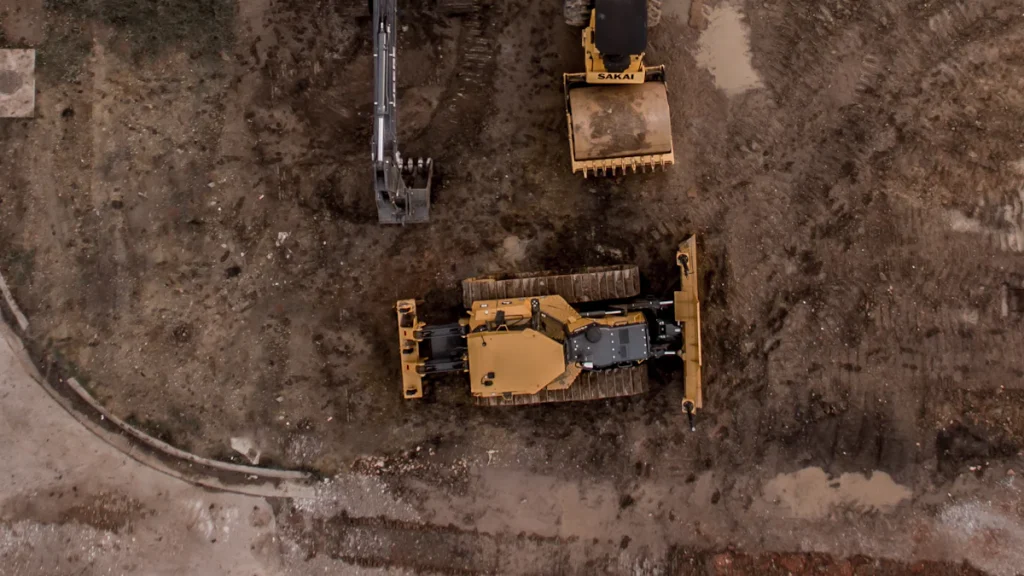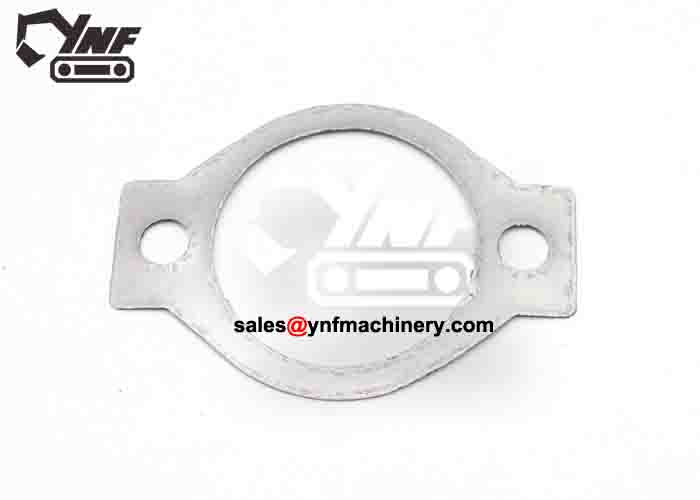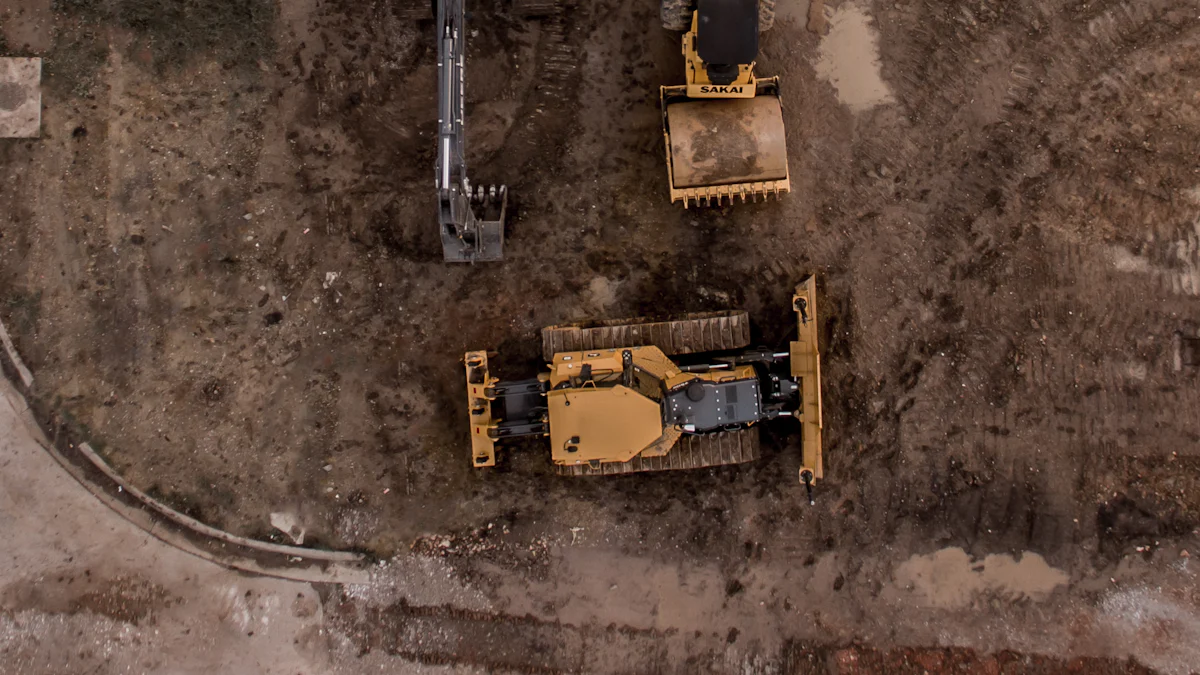
Understanding the internal parts of excavator machines is essential for keeping them in top condition. Each component contributes to the machine’s performance and reliability. For example, the engine powers the system, while the hydraulic pump ensures smooth operation. Regular maintenance of these important parts of excavators reduces downtime and operating costs. Knowing the anatomy of excavators helps you troubleshoot issues quickly and avoid costly repairs. YNF Machinery offers high-quality excavator parts, ensuring your equipment operates efficiently. Whether you work with excavators in construction or other industries, understanding their components is key to maximizing their benefits.
Key Takeaways
Understanding the internal parts of an excavator is crucial for effective maintenance and operation, leading to reduced downtime and lower costs.
The engine is the powerhouse of the excavator; regular maintenance ensures optimal performance and fuel efficiency.
The hydraulic system is essential for precise movements; maintaining hydraulic fluid quality is key to preventing performance issues.
Choosing the right bucket type enhances the excavator’s versatility and efficiency for specific tasks, from digging to material handling.
The cab design significantly impacts operator comfort and safety; investing in a well-equipped cab can improve productivity.
Regular inspections of the undercarriage components, like tracks and rollers, are vital for maintaining stability and mobility across various terrains.
YNF Machinery offers high-quality parts that enhance excavator performance, ensuring reliability and longevity of your equipment.
The Engine: The Powerhouse of an Excavator
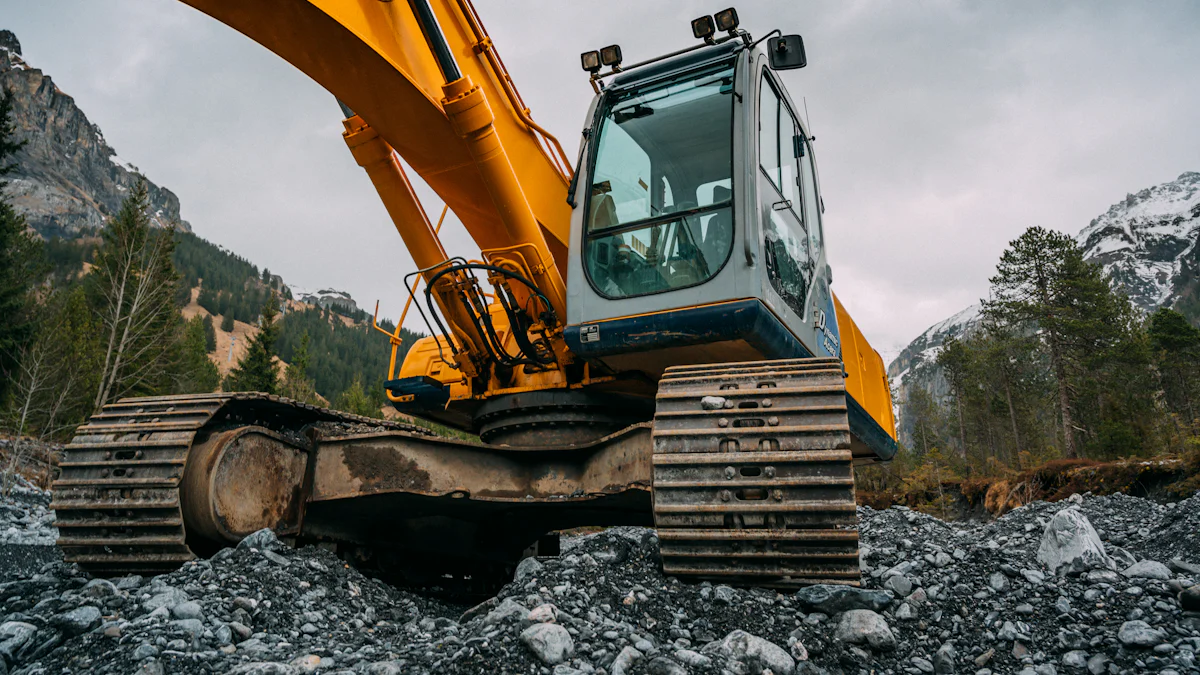
The engine serves as the core of an excavator, generating the power needed to drive its various systems. Without a reliable engine, the machine cannot perform its heavy-duty tasks effectively. Understanding the different types of engines and their functions helps you make informed decisions about maintenance and upgrades.
Types of Excavator Engines
Diesel Engines
Diesel engines are the most common type used in excavators. They provide the high torque required for heavy lifting and digging. These engines are known for their durability and ability to operate under tough conditions. Modern diesel engines also meet strict emission standards, making them more environmentally friendly. Their fuel efficiency ensures that you can complete large-scale projects without excessive fuel consumption.
Electric Engines
Electric engines are becoming a popular alternative in the construction industry. They offer quieter operation and produce zero emissions, making them ideal for urban projects or areas with strict environmental regulations. Although less common than diesel engines, electric engines represent a step toward sustainable construction practices. They also require less maintenance, reducing long-term operational costs.
Key Functions of the Engine
Powering the Excavator’s Movement
The engine generates the energy needed to move the excavator. It powers the tracks or wheels, allowing the machine to navigate various terrains. Whether you are working on rocky surfaces or soft soil, the engine ensures smooth and consistent movement.
Supporting Hydraulic Systems
The engine plays a critical role in operating the hydraulic system. It drives the hydraulic pump, which converts mechanical energy into hydraulic energy. This energy powers the boom, stick, and bucket, enabling precise and efficient digging, lifting, and loading. A well-maintained engine ensures that the hydraulic system performs at its best.
YNF Machinery’s Excavator Engine Parts
YNF Machinery offers a wide range of high-quality excavator engine parts designed to enhance performance and durability. These parts include pistons, cylinders, crankshafts, and bearings, all crafted to withstand extreme conditions. YNF Machinery ensures that their parts meet or exceed OEM standards, providing you with reliable solutions for your excavator. By choosing YNF Machinery, you gain access to components that improve fuel efficiency, reduce emissions, and extend the lifespan of your machine.
“The engine is the heart of an excavator, and maintaining it ensures the entire machine operates efficiently.”
The Hydraulic System: The Heart of the Internal Parts of Excavator
The hydraulic system serves as the backbone of an excavator, enabling it to perform heavy-duty tasks with precision and efficiency. This system uses pressurized hydraulic fluid to power various components, ensuring smooth operation and control. Understanding its main components and functions is essential for maintaining your machine’s performance.
Main Components of the Hydraulic System
The hydraulic system consists of several key components that work together to deliver power and precision. Each part plays a vital role in ensuring the excavator operates effectively.
Hydraulic Pump
The hydraulic pump acts as the driving force behind the system. It converts mechanical energy from the engine into hydraulic energy by pressurizing the fluid. This pressurized fluid powers the arm, bucket, and other attachments, allowing the excavator to handle demanding tasks. A well-functioning pump ensures consistent performance and reduces the risk of system failure.
Hydraulic Cylinders
Hydraulic cylinders are responsible for converting hydraulic energy into mechanical force. These cylinders control the movement of the boom, arm, and bucket, enabling the excavator to lift, dig, and load materials. Their robust design allows them to withstand high pressure, ensuring durability and reliability during operation.
Hydraulic Hoses and Valves
Hydraulic hoses and valves serve as the conduits and regulators of the system. The hoses transport pressurized fluid to different components, while the valves control the flow and direction of the fluid. Proper maintenance of these parts prevents leaks and ensures efficient energy transfer throughout the system.
Functions of the Hydraulic System
The hydraulic system performs several critical functions that make the excavator a versatile and powerful machine.
Powering the Boom, Stick, and Bucket
The system provides the force needed to operate the boom, stick, and bucket. This enables the excavator to dig deep trenches, lift heavy loads, and perform other demanding tasks. The responsiveness of the hydraulic system ensures that you can complete these operations with ease and accuracy.
Enabling Precise Movements
The hydraulic system allows for precise control of the excavator’s movements. Whether you need to position the arm for delicate tasks or adjust the bucket angle for efficient digging, the system ensures smooth and accurate operation. This level of control enhances productivity and reduces the risk of errors.
Importance of Hydraulic Fluid Maintenance
Maintaining the hydraulic fluid is crucial for the longevity and efficiency of the hydraulic system. Contaminated or degraded fluid can lead to reduced performance and damage to the important parts of excavators. Regularly check the fluid levels and replace the fluid as needed to prevent wear and tear on the system’s components. Proper maintenance not only extends the life of your excavator but also minimizes downtime and repair costs.
“A well-maintained hydraulic system ensures your excavator operates at peak performance, delivering power and precision when you need it most.”
The Boom, Stick, and Bucket: The Major Parts of an Excavator’s Arm
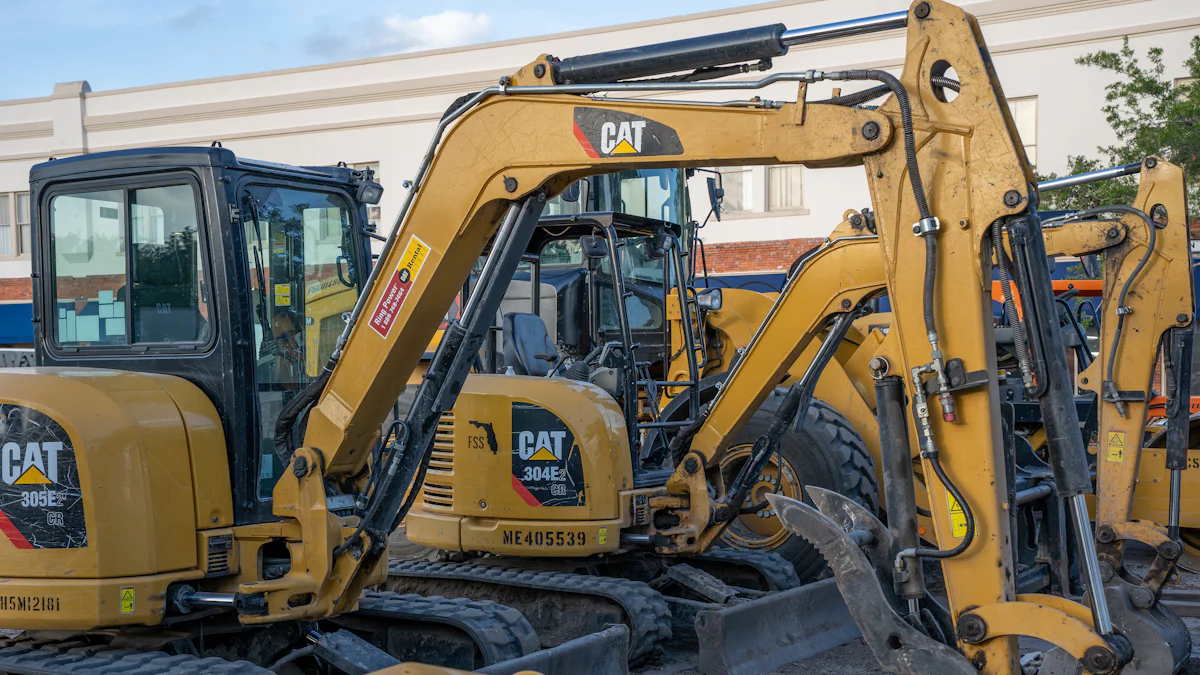
The excavator arm is a critical assembly that enables the machine to perform its primary digging functions. This assembly consists of three major parts of an excavator: the boom, stick, and bucket. Each part plays a unique role in ensuring efficient and precise operations. Understanding these components helps you maximize the performance of your machine.
The Boom
The excavator boom serves as the backbone of the arm assembly. It connects the upper structure of the machine to the stick and bucket, providing the necessary reach and height for various tasks.
Function and Variations
The boom lifts and positions the stick and bucket, enabling the machine to dig, lift, and load materials. Its design allows for a wide range of motion, making it suitable for tasks like trenching, demolition, and material handling. Manufacturers offer different boom configurations to suit specific applications:
Heavy-duty booms: Ideal for standard digging tasks in construction and earthmoving.
Long-reach booms: Designed for projects requiring extended reach, such as dredging or deep excavations.
Extreme-service booms: Built for demanding jobs like demolition, where durability is crucial.
Choosing the right boom configuration ensures that your excavator performs efficiently in its intended application.
The Stick
The stick, also known as the dipper, connects the boom to the bucket. It plays a vital role in controlling the depth and precision of the excavation.
Role in Extending Reach
The stick extends and retracts to adjust the distance between the boom and bucket. This movement allows you to dig deeper trenches, reach farther into excavation sites, or perform grading tasks with accuracy. Stick lengths vary based on the size of the excavator:
Shorter sticks: Provide better maneuverability in tight spaces and increase digging force.
Longer sticks: Offer greater reach for deep excavations or wide-area grading.
By selecting the appropriate stick length, you can optimize your machine’s performance for specific tasks.
The Bucket
The bucket is the most recognizable part of the excavator. It directly interacts with the material, making it essential for digging functions and material handling.
Types of Buckets for Different Tasks
Buckets come in various designs to handle specific tasks effectively:
Standard buckets: Suitable for general-purpose digging and loading.
Ditching buckets: Wider and shallower, ideal for grading and cleaning ditches.
Clamshell buckets: Used for vertical digging and material handling.
Specialized buckets: Include options like rock buckets for tough materials or hydraulic thumbs for grasping objects.
The ability to switch between bucket types enhances the versatility of your excavator, allowing it to adapt to different job requirements.
Importance of Bucket Teeth
The importance of the bucket teeth cannot be overstated. These teeth improve penetration into hard soil, clay, or rock, making digging more efficient. High-strength steel teeth withstand wear and tear, ensuring durability. Regular inspection and replacement of worn teeth maintain the bucket’s performance and extend its lifespan.
“The bucket is where the action happens. Keeping it in top condition ensures your excavator delivers optimal results.”
Understanding the major parts of an excavator arm—boom, stick, and bucket—empowers you to make informed decisions about maintenance and upgrades. By selecting the right configurations and maintaining these components, you ensure your machine operates at peak efficiency.
The Cab: The Operator’s Control Center
The cab of an excavator serves as the operator’s command hub, housing the essential systems that control the machine’s performance. A well-designed cab enhances productivity by providing comfort, safety, and ease of operation. Modern excavator cabs incorporate advanced features to ensure operators can work efficiently, even during long hours.
Features of the Cab
Control Panels and Joysticks
The main controls in the cab include intuitive control panels and joysticks. These tools allow you to manage the excavator’s movements and functions with precision. Control panels often feature LCD touchscreens, jog dials, and passcode start systems, making operation straightforward and secure. Joysticks provide smooth handling of the boom, stick, and bucket, ensuring accurate execution of tasks. Advanced models, like those in the LiuGong Excavators, also include fault codes and maintenance reminders, helping you monitor the machine’s condition in real time.
Visibility and Comfort
Visibility plays a crucial role in safe and efficient operation. Modern cabs, such as those in the Link-Belt Excavators X4S Series, offer panoramic views and advanced camera systems like the WAVES 270-degree camera. These features help you maintain awareness of your surroundings, reducing the risk of accidents. Comfort is equally important. Ergonomic seating, air conditioning, and sound insulation minimize fatigue, allowing you to focus on the task at hand. Adjustable seats and brightness controls further enhance the operator’s experience, ensuring you remain comfortable throughout the workday.
Safety Features in Modern Cabs
Safety is a top priority in excavator cab design. Modern cabs include features like the Rollover Protection Structure (ROPS), which shields you in case of accidents. Dual LED cab lights improve visibility during nighttime operations, while counterweights enhance stability, preventing tipping during heavy-duty tasks. These safety measures ensure that you can operate the excavator confidently, even in challenging conditions.
“The cab is more than just a seat; it’s a carefully designed space that prioritizes your safety, comfort, and efficiency.”
By understanding the cab’s features and safety measures, you can make the most of your excavator’s capabilities. A well-maintained cab not only improves your productivity but also ensures a safer working environment.
The Undercarriage: Supporting the Main Components of an Excavator
The undercarriage forms the foundation of an excavator, supporting its weight and enabling movement across various terrains. It plays a vital role in maintaining stability and ensuring the machine operates efficiently. Understanding the key components and their functions helps you keep your excavator in optimal condition.
Components of the Undercarriage
The undercarriage consists of several critical components that work together to provide mobility and stability.
Tracks or Wheels
Tracks or wheels are the primary elements that allow the excavator to move. Tracks, often made of steel or steel-reinforced rubber, are ideal for rugged terrains. They distribute the machine’s weight evenly, reducing ground pressure and preventing sinking on soft surfaces. Wheels, on the other hand, are more suitable for hard, flat terrains and offer faster movement. Choosing the right option depends on the type of work and terrain you encounter.
Rollers and Idlers
Rollers and idlers ensure smooth and reliable track movement. Rollers guide the excavator tracks along the undercarriage, minimizing wear and maintaining proper alignment. Idlers help control track tension, preventing slack that could lead to operational issues. Together, these components enhance the efficiency and longevity of the undercarriage system.
Functions of the Undercarriage
The undercarriage performs essential functions that directly impact the excavator’s performance and usability. Proper maintenance of this system ensures your machine operates at its best.
Providing Stability
The undercarriage stabilizes the excavator during operation. Its design distributes the machine’s weight evenly, allowing it to remain steady while lifting heavy loads or digging deep trenches. This stability is crucial for maintaining safety and precision on the job site.
Enabling Movement on Various Terrains
The undercarriage allows the excavator to navigate different terrains with ease. Tracks provide excellent traction on uneven or soft surfaces, while wheels offer speed and maneuverability on firm ground. This adaptability ensures your excavator can handle diverse tasks, from construction to mining.
A well-maintained undercarriage ensures your excavator remains stable and mobile, no matter the terrain.
By understanding the components and functions of the undercarriage, you can take proactive steps to maintain its performance. Regular inspections and timely replacements of worn parts, such as rollers or tracks, help extend the life of your excavator undercarriage and reduce downtime.
The Counterweight: Balancing the Parts of an Excavator
Purpose of the Counterweight
The counterweight plays a crucial role in maintaining the stability of your excavator. It ensures that the machine remains balanced during heavy-duty operations, especially when lifting or digging. Without this essential component, the excavator could lose its equilibrium, leading to unsafe working conditions and potential damage.
Preventing Tipping During Operation
The counterweight counterbalances the force exerted by the boom, stick, and bucket when they handle heavy loads. This balance prevents the excavator from tipping forward or sideways. For example, when you dig deep trenches or lift heavy materials, the counterweight provides the necessary leverage to keep the machine stable. This stability not only enhances safety but also improves the precision of your operations. A well-maintained counterweight ensures that your excavator performs efficiently, even under challenging conditions.
“The counterweight does exactly what its name implies—it counterbalances the excavator, providing leverage and preventing tipping.”
Variations in Counterweight Design
Counterweights come in various designs to suit different excavator models and applications. Manufacturers use advanced techniques and materials to create counterweights that meet specific performance requirements.
Material Choices: Many counterweights are made from cast iron due to its durability and reliability. Cast iron can withstand the demanding conditions of heavy-duty applications, ensuring long-lasting performance.
Complex Shapes: Modern counterweights often feature intricate designs with holes and unique shapes. These designs optimize weight distribution and improve the overall efficiency of the excavator.
Custom Configurations: Some counterweights are tailored to specific tasks or terrains. For instance, heavier counterweights may be used for machines handling extreme loads, while lighter ones suit compact excavators working in confined spaces.
By understanding the variations in counterweight design, you can select the right configuration for your excavator. Choosing the appropriate counterweight enhances stability, safety, and operational efficiency.
“The design and material of a counterweight directly impact its effectiveness, making it a critical component for optimal excavator performance.”
YNF Machinery’s Role in Supporting Excavator Performance
High-Quality Excavator Engine Parts
The engine is the core of your excavator, and its efficiency directly impacts the machine’s overall performance. YNF Machinery offers a wide range of excavator engine parts designed to meet the demands of heavy-duty operations. These parts include pistons, cylinders, crankshafts, and bearings, all crafted from high-quality materials to ensure durability and reliability.
YNF Machinery understands the importance of maintaining engine efficiency. Their products help reduce fuel consumption and emissions, which lowers operating costs. For example, Yanmar diesel engines, known for their reliability and efficiency, benefit greatly from YNF Machinery’s compatible engine parts. Whether you need an engine overhaul kit or a specific component, YNF Machinery provides solutions that keep your excavator running smoothly.
“A well-maintained engine ensures your excavator delivers consistent power and optimal performance.”
Durable and Efficient Excavator Couplings
Couplings play a vital role in connecting the engine to the hydraulic pump, ensuring smooth power transmission. YNF Machinery offers durable and efficient excavator couplings that enhance the performance of your machine. These couplings are designed to withstand harsh working conditions, reducing the risk of machinery failure.
YNF Machinery provides various types of couplings, including Centaflex-A and Bowex models, which are known for their flexibility and vibration isolation.
“Reliable couplings ensure seamless power transfer, keeping your excavator efficient and productive.”
Why Choose YNF Machinery for Excavator Parts
YNF Machinery has built a reputation for delivering high-quality excavator parts that meet or exceed OEM standards.
Here’s why you should choose YNF Machinery:
Extensive Product Range: From engine parts to couplings, YNF Machinery offers a comprehensive selection of components for various excavator models.
Quality Assurance: All products undergo rigorous quality inspections to ensure reliability and durability.
Competitive Pricing: YNF Machinery provides cost-effective solutions without compromising on quality.
Global Reach: With fast shipping and excellent customer support, YNF Machinery serves clients worldwide, ensuring you get the parts you need when you need them.
By choosing YNF Machinery, you invest in parts that improve your excavator’s performance, reduce downtime, and extend its lifespan.
“YNF Machinery combines quality, reliability, and affordability to support your excavator’s performance and efficiency.”
The internal parts of an excavator work together to deliver exceptional performance. The engine powers the machine, while the hydraulic system ensures precise movement of the arm, boom, and bucket. The cab provides control and safety, and the undercarriage offers stability across terrains. Each part of an excavator plays a vital role in its operation. Understanding these components helps you maintain efficiency and troubleshoot issues effectively. YNF Machinery supports your needs with high-quality excavator engine parts and couplings, ensuring your machine operates at peak performance. Maximize the benefits of using excavators by keeping their parts in top condition.
FAQ
What are the basic parts of an excavator and how do they work?
Excavators consist of several essential components, each playing a specific role in its operation. The undercarriage provides stability and mobility, allowing the machine to move across various terrains. The cab serves as the operator’s control center, housing controls and safety features. The arm assembly, which includes the boom, stick, and bucket, performs the digging and lifting tasks. The hydraulic system powers the arm’s movements, while the engine generates the energy needed for the entire machine to function. Understanding these parts helps you operate and maintain your excavator effectively.
What is the function of the hydraulic system in an excavator?
The hydraulic system acts as the backbone of an excavator. It uses pressurized hydraulic fluid to power the boom, stick, and bucket. This system enables precise movements, making it possible to dig trenches, lift heavy loads, and perform other tasks with accuracy. Regular maintenance of hydraulic fluid and components is crucial for optimal performance.
How does the counterweight improve excavator stability?
The counterweight balances the excavator by offsetting the weight of the boom, stick, and bucket during operation. It prevents tipping when lifting heavy loads or digging deep trenches. Counterweights come in various designs and materials, such as cast iron, to suit different excavator models and tasks. Maintaining the counterweight ensures your machine remains stable and safe during heavy-duty operations.
Why is the undercarriage important for an excavator?
The undercarriage supports the excavator’s weight and provides mobility. Tracks or wheels allow the machine to move across different terrains, while rollers and idlers ensure smooth track movement. The undercarriage also distributes the machine’s weight evenly, enhancing stability during operation. Regular inspections and timely replacements of worn parts, like tracks or rollers, help maintain its efficiency.
What types of engines are used in excavators?
Excavators typically use diesel engines or electric engines. Diesel engines are common due to their high torque and durability, making them ideal for heavy-duty tasks. They are fuel-efficient and meet modern emission standards. Electric engines, on the other hand, offer quieter operation and zero emissions, making them suitable for urban projects or environmentally sensitive areas. Both types have unique advantages depending on your operational needs.
How do I choose the right bucket for my excavator?
Choosing the right bucket depends on the task at hand. Standard buckets are versatile and suitable for general digging and loading. Ditching buckets work well for grading and cleaning ditches. Clamshell buckets are ideal for vertical digging and material handling. For tougher materials like rock, specialized buckets with reinforced teeth are recommended. Selecting the appropriate bucket enhances efficiency and extends the lifespan of your equipment.
What maintenance does an excavator require?
Regular maintenance ensures your excavator operates efficiently. Key tasks include checking and replacing hydraulic fluid, inspecting tracks or wheels, and maintaining the engine. Cleaning the bucket and replacing worn teeth improve digging performance. Monitoring the cab’s controls and safety features ensures smooth operation. Following a maintenance schedule reduces downtime and extends the life of your machine.
How does YNF Machinery support excavator performance?
YNF Machinery provides high-quality excavator parts, including engine components, hydraulic couplings, and more. Their products meet or exceed OEM standards, ensuring durability and reliability. YNF Machinery also offers expert support to help you choose the right parts for your machine. With competitive pricing and fast shipping, they ensure your excavator stays operational and efficient.
What are the benefits of using YNF Machinery’s excavator parts?
YNF Machinery’s parts enhance your excavator’s performance by improving durability and efficiency. Their engine parts reduce fuel consumption and emissions, lowering operating costs. Hydraulic couplings ensure smooth power transmission, minimizing wear and tear. With a wide range of products and excellent customer service, YNF Machinery helps you maintain your equipment and reduce downtime.
Why is understanding excavator parts important?
Knowing the parts of an excavator and their functions helps you operate and maintain the machine effectively. It allows you to troubleshoot issues, perform timely repairs, and avoid costly downtime. Understanding components like the engine, hydraulic system, and arm assembly ensures your excavator performs at its best, maximizing productivity and safety on the job site.

